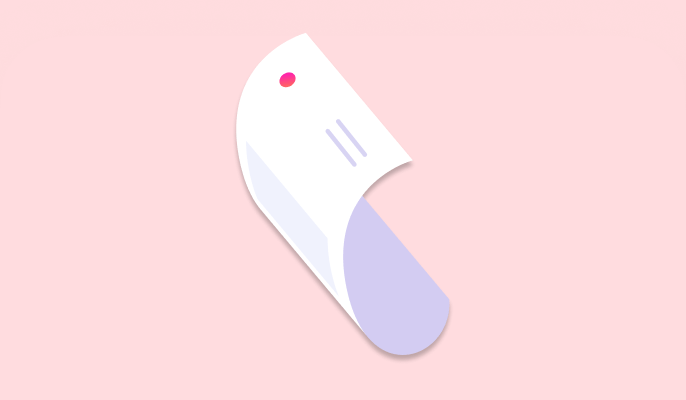Do you often take small amounts or even large amounts of cash in the course of your business? If so, it’s best to keep a cash book and/or a receipt book to have a precise record of your finances. But what’s the difference between the two? How do you fill them out correctly? And how do you integrate this data into your accounting? Here’s everything you need to know about cash books and receipt books.
The differences between a cash book and a receipt book
The main difference between a cash book and a receipt book is the type of transactions recorded in it.
A receipt book contains all transactions without an invoice, regardless of the method of payment.
In a cash book, you record money coming in and going out, but only for cash transactions – including cash payments of invoices.
Receipt book: what do you need to know?
The purpose of a receipt book is to record all daily transactions that don’t have an associated invoice. This is important for freelancers and companies that have many direct transactions with their customers. As a hairdresser, beautician or retailer, for example, you receive payments via different payment methods. The receipt book lets you keep a complete overview.
The receipt book also makes it easier to integrate your income in your accounting.
Who should fill out a receipt book?
Keeping a receipt book is mandatory in any industry where it’s not common to issue an invoice for every service or sale. But there are some exceptions.
Here are the situations in which you are not required to keep a receipt book:
🧾 You always provide an invoice.
🧑🍳 You use an SCE (cash register system), also called a ‘white cash register’.
🧮 You work via the flat-rate VAT regime (this regime will be abolished in 2028).
💡 Accountable tip: Even businesses that fall under the VAT exemption scheme for small businesses are required to keep a receipt book.
What are the requirements for a receipt book?
Do you need to keep a receipt book for your business? Follow these rules to fill it out correctly:
- Fill out your receipt book daily, even when there’s no income.
- Note the total amount per day.
- Include sales over €250 on a separate line.
- Separate the entries according to the VAT rate applied.
- Write with a pen that can’t be erased (never use pencil).
- Enter any corrections separately without erasing or crossing out the original entry.
- Make sure the pages are numbered.
- Make sure all entries are numbered.
- Mention your VAT number on each page.
- Calculate the monthly total and close the month.
It’s also important to follow these guidelines:
- Make sure you can prove all income via sales receipts, sales dockets, or an appointment diary.
- Use a separate book per main location/branch.
- Keep a centralised book at your main location.
💡 Accountable tip: You can find receipt books in most stationery stores. Do you prefer to keep your records in digital format? Then you’ll need a special accounting program.
Cash book: what do you need to know?
A cash book records all cash transactions. Every time money comes in or goes out of the cash register, you need to write it down. Like in the following situations:
- Your customers pay in cash.
- You pay a supplier in cash.
- You use money from the cash register for personal purposes.
- You add personal money to the cash register.
- You deposit money from the cash register into a bank account.
- You withdraw money from a bank account to put in the cash register.
With a cash book, you record these cash flows accurately. This is important for keeping track internally, but also to get a clear overview of your total income and expenses.
Who should keep a cash book?
Keeping a cash book is mandatory for entrepreneurs who regularly work with cash. Do you only occasionally receive or make cash payments? In this case, you don’t need to keep a cash book.
How to enter income and expenses in a cash book
In a cash book, every income or expense is recorded on a separate line. But you can group several small income amounts and record them as daily income.
On each line, you indicate the following information: the date, a description, the amount of the income or expense, and the current balance.
Just like a daily receipt book, your cash book should be clearly filled out with no changes made to any of the entries. Here too, it’s best to buy a pre-printed cash book from a stationery store or use specialised software, such as Scrada.
Integrating your cash book and receipt book in your accounting
If you’re self-employed as a sole trader, you’re allowed to keep single-entry, or simplified accounts. In this case, you don’t need to process your cash book via an accounting program. You simply need to keep the cash book and be able to present it.
With double-entry accounts, you need to link your cash book to your purchases or sales. This means that in your accounting software, you need to establish links between the different types of books, such as purchase, sales, financial, and inventory books.
As for the income you record in a receipt book, you must communicate it to your accountant or process it yourself in your accounting.
Processing your receipt book in Accountable
In the Accountable app, go to the ‘Revenue’ section and select ‘Add other revenue‘ to enter your sales total. Only record individual sales under €250 as ‘non-invoiced income’. For sales over €250 and international sales, it’s best to create an invoice.
